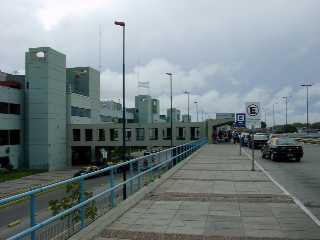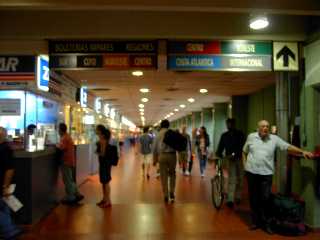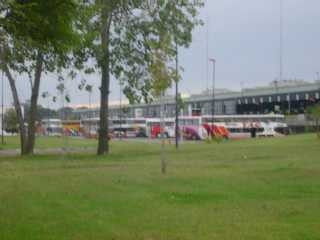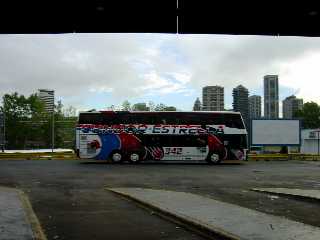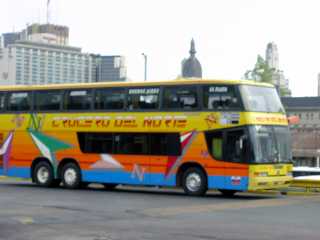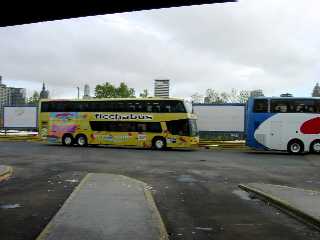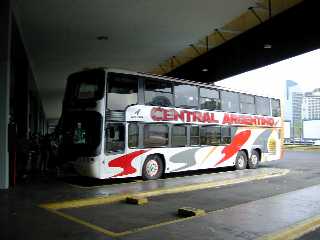 |
| Non-step Bus of Line 7@Retiro Enlarge |
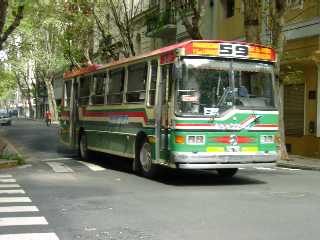 |
| Line 59@Recoleta Enlarge |
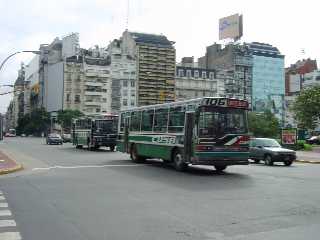 |
| Line 106@Avenida 9 de Julio Enlarge |
 |
| Line 101@Avenida 9 de Julio Enlarge |
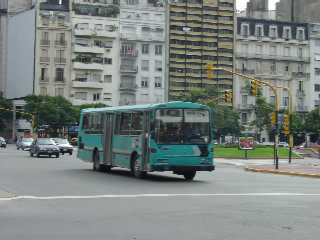 |
| Line 10@Avenida 9 de Julio Enlarge |
My dictionary says that buses are called "colectivo" in Latin America. In Argentina, city buses are called "colectivo" and long-term buses or sightseeing buses are called "omnibus". The travel guidbook "Chikyu-no-arukikata" says there are about 150 lines of colectivos in Buenos Aires and they are numbered. It seems that one company manages one line and every company has its original design so when you are used to this city you'll be able to understand the line number by seeing the car's painting. Because we couldn't understand which line go where at all and the guidbook says that there is a knack in riding colectivos, we didn't use them. The book also says there are guidbooks of colectivos in bookstores but we couldn't find such things. It is very disappointing.
I show some photos but I don't know them well so I can't explain them.
Every car has a fixed display of the line number and both terminals on the top of the front window. Some cars have variable destination displays in the left bottom of the front window. Some cars are painted the line number directly on the body but other numbers (I don't know what they mean) are sometimes also painted and it confuse us. Every car has a common-style sign sticker that shows line number, company, and telephone number.
There are a Benz marks on the front of most old cars and "ED" marks on many new cars. "ED" means El Detalle, the Argentine coach builder. So, old cars make stands the engine maker out and new cars make stands the coach builder out. I take delight in looking for Japanese cars when travelling abroad but I could hardly find them in this nation. Much less buses.
They say the climate is the same between Buenos Aires and Tokyo but there are fer air conditioners in this city. Most of colectivos also don't have it. Because of such few air conditioners, if there is a air conditioner in some place, it surely displays "Aire acondicionado (Air conditioned)". I had found the sign on the colectivo only one time but it also made all the windows opened... On the other hand, there are many non-step buses. I think they accounts about a tenth of whole buses in this city.
It seems to be decided that passengers get on the car by the front door with payment and get off by the rear. There is a machine like a ticket vending machine in a car and when a passenger pays the driver handles the machines and it holds out a ticket. Some cars have arrow signs on every door, up-pointing menans entry and down-pointing means exit. Some cars have a 'rear' door on the centre of the side and some have it behind the rear wheel and some have doors on both location.
Colectivos carry many passengers, in comparison with Tokyo. It is perhaps because there are few railways.
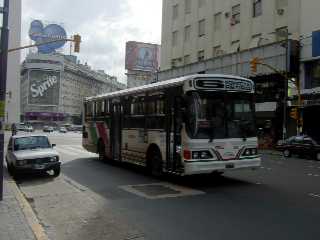 |
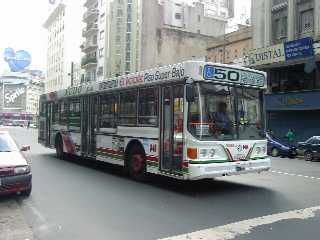 |
| Line 6@San Nicolas Enlarge | Line 50@San Nicolas Enlarge |
